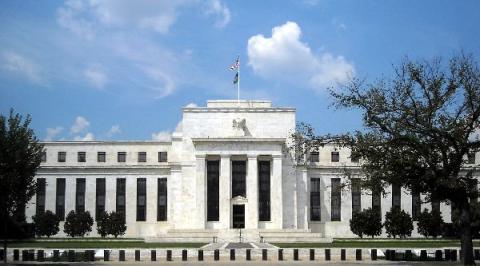Federal Reserve Chairman Ben Bernanke held a press conference Wednesday to outline the FED's overarching fiscal approach moving into 2013. When compared to current policy, the announcement suggests little diversion from the monetary policies of 2012. The FED is set to increase its implementation of the 'Quantitative Easing 3' bond-buying program. A total of $85 billion a month in Treasury purchases and mortgage-backed securities are expected next year.
The continued stimulus will keep interest rates extremely low until unemployment falls below 6.5 percent, expected to occur in 2015. The 6.5 percent benchmark marks the first unemployment target set by the Federal Open Market Committee (FOMC).
Chairman Bernanke said:
"In particular, the Committee expects that the stated threshold for unemployment will not be reached before mid-2015 and projects that inflation will remain close to 2 percent over that period. Thus, given the Committee’s current outlook, the guidance introduced today is consistent with the Committee’s earlier statements that exceptionally low levels for the federal funds rate are likely to be warranted at least through mid-2015."
The acceptable inflation target was raised to 2.5 percent, up from the existing 2 percent. Raising this rate has concerned some inflation hawks like Richmond FED chairman and committee member, Jeffrey Lacker. As the only dissenting voice in an 11-1 vote, Lacker has warned that rampant inflation could result from continued asset purchases.
In a response to October’s QE 3 announcement Lacker stated:
“I opposed continuing additional asset purchases. Further monetary stimulus now is unlikely to result in a discernible improvement in growth, but if it does, it’s also likely to cause an unwanted increase in inflation… further monetary stimulus runs the risk of raising inflation in a way that threatens the stability of inflation expectations.”
Though weariness over inflation is warranted, keeping interest rates lower for longer discourages investors from sitting on their capital. Instead, it incentivizes immediate market investment, which should spur economic growth.
These programs are projected to increase the FED’s balance sheet by almost a third in 2013, which is currently at about $2.8 trillion. Bernanke’s overall assessment was optimistic in light of inflation worries. Positive signs from the housing market have largely contributed to the slow but sure economic recovery since 2010.
“I think we’re seeing modest improvement in mortgage markets. One thing that’s helping is a stronger housing market… As house prices have begun to rise, as the economy has gotten a little stronger, lending standards have eased just a bit.”
Both the Dow Jones and NASDAQ closed in the red Thursday, down 0.56% and 0.72% respectively as the news of further stimulus did little to improve the dollar's strength against other international currencies like the Euro.
However, the economic benchmarks that the FED set -- inflation remaining below 2.5 percent, unemployment reaching below 6.5 percent, and long-term inflation projections remaining manageable -- all serve as critical thermometers whereby Wall Street can more accurately gauge economic trends moving past 2013. This is intended to instil greater confidence in domestic markets.
Bernanke made it clear that the FED could not completely offset the fiscal cliff and limited means remained available to accommodate impending austerity. It is possible, however, for further adjustments to be made should the 'cliff' arrive without any viable solutions on the table.
